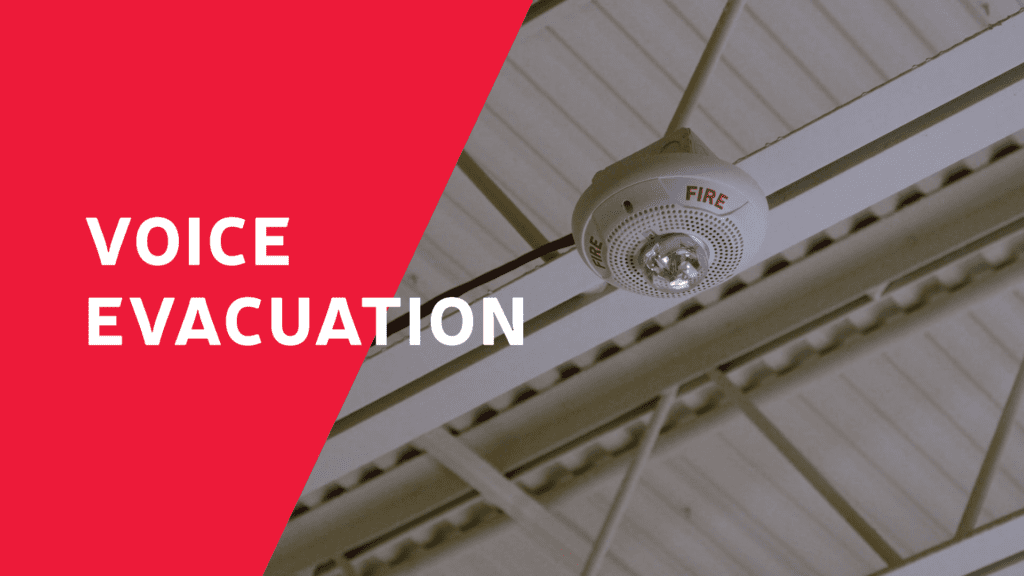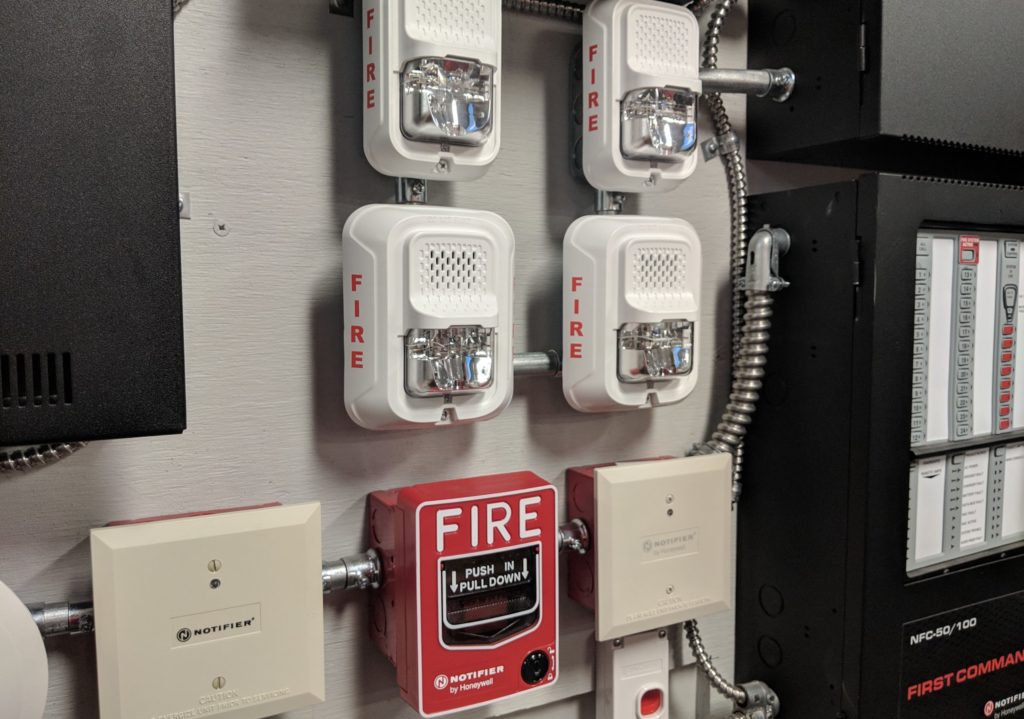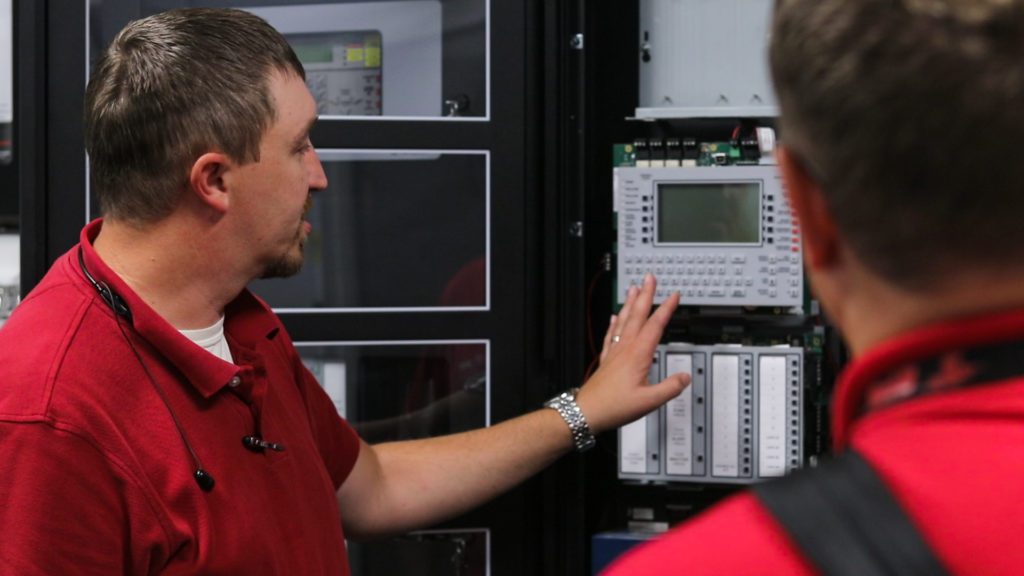
 Technology is always evolving, and fire alarm systems are no exception. The ability to detect and communicate fire alarms has improved significantly since the first fire alarm signal was sent via telegram in 1852. This enhanced fire safety for businesses exponentially.
Technology is always evolving, and fire alarm systems are no exception. The ability to detect and communicate fire alarms has improved significantly since the first fire alarm signal was sent via telegram in 1852. This enhanced fire safety for businesses exponentially.
The newest generation of fire alarms is that of voice evacuation systems: An alternative so well-received that it is a system often required by state and municipal fire code. Knowing the difference between conventional fire alarm systems, and voice evacuation technology, is vital when considering what best works to protect the lives, and livelihoods, in your business.
Fire alarm systems
A traditional commercial fire alarm system is designed to notify both the employees onsite, and a designated monitoring center, of any potential fire event. Devices such as smoke and heat detectors are installed throughout the facility to detect early signs of fire, and report to fire-rated alarm systems. Upon receiving a fire alarm signal, the system’s control panel activates flashing strobes and blaring horns throughout the building. This initiates an evacuation.
Additionally, the panel transmits a signal to a monitoring center, whose operators immediately dispatch emergency services to the site. If an emergency arises before any of the detection devices pick up on it, a person can pull down on a hand pull to activate the fire alarm and trigger an evacuation.
Commercial fire alarm systems are required by law, and their design is, at least partly, influenced by local and national fire alarm codes. Because of this, a great deal of planning goes into designing a traditional fire alarm system. The system must be designed so that every occupant of the building, regardless of where they are, can hear and/or see the system activating, in the event of a fire alarm. This standard of performance is often called, “intelligibility.”
A well-designed, fully-functioning fire alarm system is highly effective at triggering an evacuation in the event of a fire, but it is decidedly unhelpful when it comes to alerting people of how to evacuate. For instance:
- If a fire occurs in the lobby of a building, it’s likely some will head towards the fire in attempt to escape
- In the event of a non-fire-related emergency, the system lacks a method for alerting people at the business
- People perceive false alarms to be more common than actual alarm events, so many occupants of a building do not take evacuation seriously when an alarm sounds
Traditional fire alarm systems have provided businesses with excellent protection for decades, but there is always room for improvement. In recent years, the traditional “sights and sounds,” approach to fire alarms has been challenged by a more intuitive and efficient alternative: The voice evacuation system.
 Voice evacuation and emergency communication systems
Voice evacuation and emergency communication systems
A voice evacuation system functions similarly to a fire alarm system, with a few notable exceptions. A voice evacuation system utilizes similar field equipment—smoke and heat detectors, hand pulls, and more—but instead of horns and strobes to alert occupants of a fire, it annunciates the notification through speakers.
With a voice evacuation system, pre-recorded messages can be used. Or, for facilities with emergency personal monitoring the site 24/7, a designated individual can announce evacuation procedures through the speakers. Additionally, emergency services can use the voice evacuation system to communicate real-time emergency information upon arrival.
Voice evacuation systems are considered a category of emergency communication systems (ECS), which also include mass notification systems. A mass notification system (MNS) works similarly to voice evacuation, but instead of dealing specifically with fire alarm systems, or specifically evacuating a facility, a MNS can be used for multiple purposes.
For example, in the event of a tornado, you would not want to evacuate your facility and expose occupants to severe weather. Instead, a MNS can notify everyone of the conditions, and inform employees to take cover per pre-establishes emergency procedures. Mass notification systems can be used to notify occupants of a variety of scenarios, ranging from quarantines, to active shooters.
 When do I need a voice evacuation system?
When do I need a voice evacuation system?
Given the complexity of existing fire code, whether or not you need a voice evacuation system in your business may be out of your hands. Stringent fire codes dictate much of when, where, and how an emergency communication system is installed.
According to International/Michigan Building Code, voice evacuation systems are required to be installed in:
- All educational occupancies with an occupant load of more than 100
- All “high-rise” occupancies
- Assembly occupancies with more than 1,000 occupants (churches, community centers, etc)
- All theaters with more than one audience viewing room
In a nutshell, some businesses (often larger ones) are required by law to have a functional voice evacuation system installed before opening their doors.
While it’s not required in all businesses, many smaller businesses have decided to make the switch to ECS, given the benefits of emergency communication systems over traditional fire alarm systems. Having a voice evacuation system to alert occupants of real emergencies reduces the risk of employees or other persons thinking an alarm is “just a drill.” Pre-recorded messages on mass notification systems allow for a more efficient handling of emergency procedures during diverse emergency scenarios.
Switching from a traditional fire alarm system to a voice evacuation system, can often be done using many of the existing components of an up-to-date, traditional fire alarm system. And at EPS Security, we’re here to help.
 The EPS advantage
The EPS advantage
Constructing a traditional fire alarm system is a complex balance of fire code compliance and fire alarm system engineering. A functional fire alarm or voice evacuation system is vital for the protection of your employees, customers, and facilities. Because of this, choosing which type of system works best for your business, is just as important as selecting who will provide it.
For your fire alarm and voice evacuation system needs, consider EPS Security: Michigan’s largest local and family-owned security provider. Our expert consultants, engineers, technicians, and more, will work with you to meet and maintain fire code, and to protect your business’ livelihood. As a leading security provider in the state of Michigan since 1955, we have the experience, and expertise to serve as your strategic, life safety partner.
